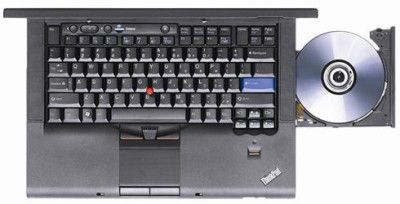From our front-page news:
What would a computer be without a keyboard? Useless if you ask me. But just how much thought has gone into the keyboard as we know it, and is there room for improvement? The folks at Lenovo think so, but it's obvious that changes can't be made without some serious thought first. How many times have you purchased a new keyboard or notebook, only to be upset by a certain placement? It's happened to me too many times.
On their latest ThinkPad model, Lenovo moved their "Delete" key, and for some it might be a welcome or loathed change. But in an article by USA Today, it's shown that the company doesn't take such changes lightly, and they put in mass amounts of research before committing to one. Recently, they even installed keypress tracking software on 30 employees' computers (the employees knew) in order to see which keys were used most often, and this helped them decide which keys should and shouldn't be touched.
The question must be begged... are we due for a major keyboard overhaul? With the advent of people being able to type on ridiculously small keyboards (cell phones, PDAs, etc), it seems as though the current layouts could likely be changed for the better and no one would mind. Not to mention we still have some keys that seemingly have little purpose, such as the CAPS LOCK. I'm perfectly happy with current layouts on most boards, and I'm not opposed to change, but I'm really not sure what major changes any company could make that most everyone would be pleased with. That's a tough one.

Push-back from consumers hasn't stopped companies from testing and even manufacturing keyboards with unconventional designs over the years, in some cases demonstrating that people could learn to type faster than on standard QWERTY keyboards, so-called because of the arrangement of the top row of letters. During Hardy's time at IBM, researchers came up with ball-shaped one-handed keyboards that he said were faster than standard ones.
Source: USA Today
On their latest ThinkPad model, Lenovo moved their "Delete" key, and for some it might be a welcome or loathed change. But in an article by USA Today, it's shown that the company doesn't take such changes lightly, and they put in mass amounts of research before committing to one. Recently, they even installed keypress tracking software on 30 employees' computers (the employees knew) in order to see which keys were used most often, and this helped them decide which keys should and shouldn't be touched.
The question must be begged... are we due for a major keyboard overhaul? With the advent of people being able to type on ridiculously small keyboards (cell phones, PDAs, etc), it seems as though the current layouts could likely be changed for the better and no one would mind. Not to mention we still have some keys that seemingly have little purpose, such as the CAPS LOCK. I'm perfectly happy with current layouts on most boards, and I'm not opposed to change, but I'm really not sure what major changes any company could make that most everyone would be pleased with. That's a tough one.

Push-back from consumers hasn't stopped companies from testing and even manufacturing keyboards with unconventional designs over the years, in some cases demonstrating that people could learn to type faster than on standard QWERTY keyboards, so-called because of the arrangement of the top row of letters. During Hardy's time at IBM, researchers came up with ball-shaped one-handed keyboards that he said were faster than standard ones.
Source: USA Today
